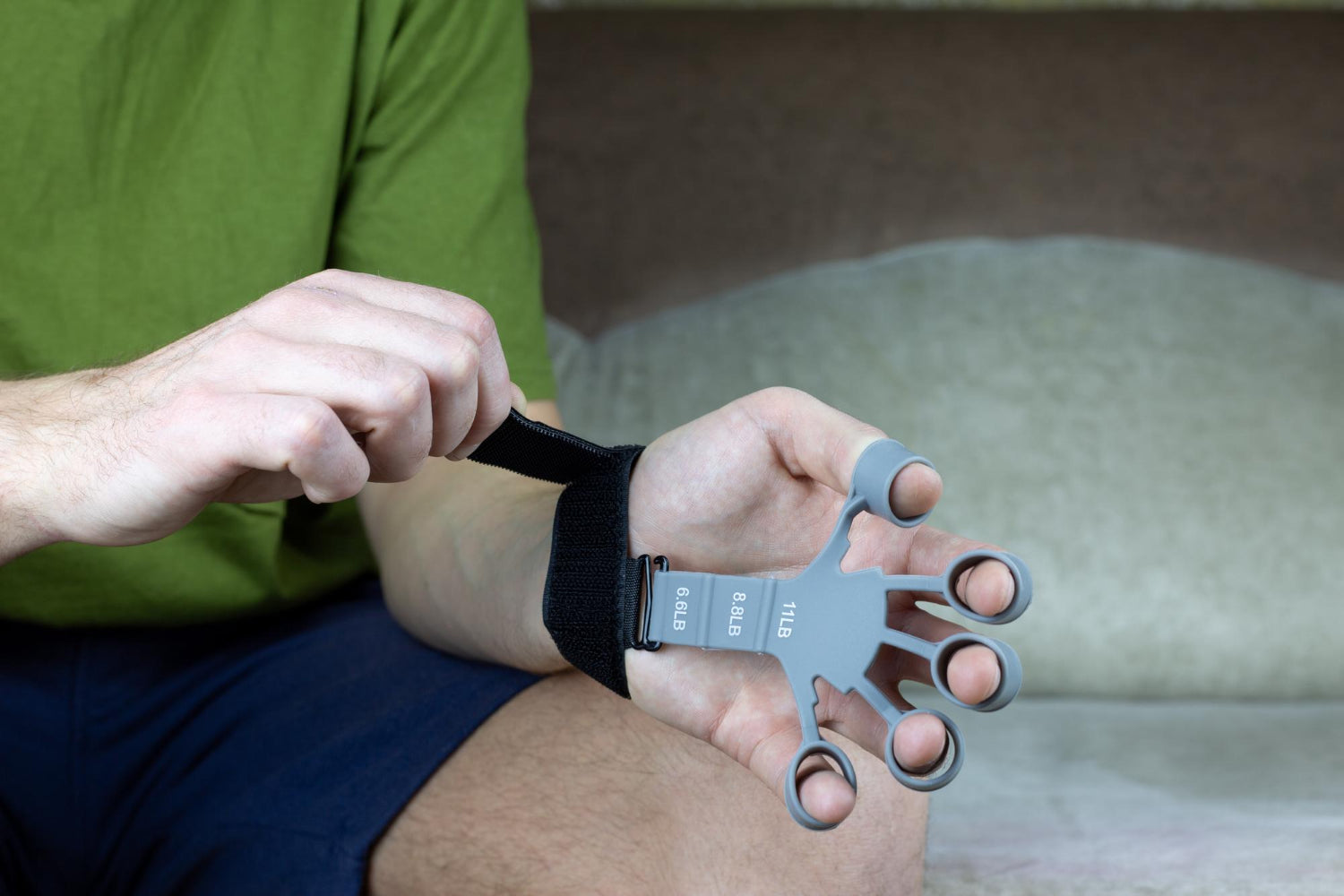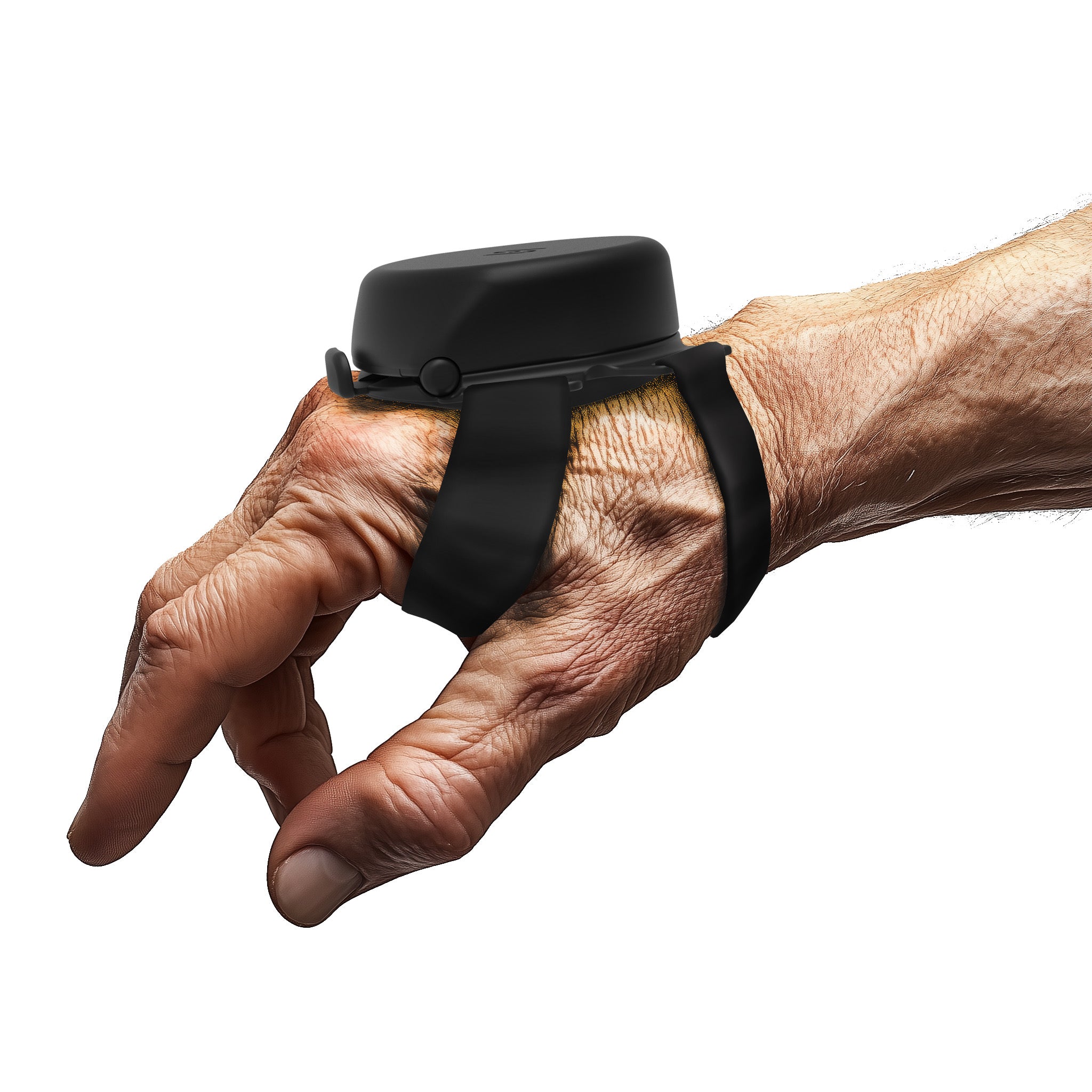Hand tremor can significantly affect everyday life, causing difficulties with such fine motor skills as eating, writing, and personal grooming, which can sometimes be frustrating. These may result from Essential Tremor (ET), the most common movement disorder, or might originate from other neurological conditions, including Parkinson's disease. In terms of impacts on independence and quality of life, the outcomes for the patient can be monumental.
Fortunately, medical technology has reached such a point in development that many supportive assistive devices have been devised in many different forms to alleviate hand tremors, from wearable technology to specific utensils designed to comfort and offer differing aspects of functionality in daily activity. In this detailed guide, we will dive into the varied types of assistive devices that exist, explain how they work and whom they benefit, and discuss considerations for selecting the right one to meet one's personal needs.
Wearables For Hand Tremor
Wearables are engineered to help individuals with hand tremors, deploy advanced technology to develop stable devices and support hand movements. These gadgets are engineered to precisely target those challenges one experiences with tremors, offering a mix of functionality and user comfort. Unlike other treatments, which may involve medicines with potential side effects or invasive surgical procedures, these wearables provide a more user-friendly, non-invasive option. They easily integrate into everyday life: usually adjustable, discreet, and permitting the management of tremor symptoms without interrupting the patient's everyday activities.
1- Weighted Wearables
Weighted wearables are one category of tremor-assistive devices that add a calculated amount of weight to the wrist area, thereby increasing the resistance that helps stabilize hand movements. The principle behind these devices is that added resistance may balance the effects of the tremor and allow for smooth, more controlled movements. While some products in this category, such as weighted gloves, advertise large amplitudes of tremor reduction, this can vary between individuals.
Studies and user feedback indicate that weighted wearables can be helpful, but maybe not for all. Some users reported a notable decrease in the severity of their tremors, which can enhance the quality of their daily interactions and activities, from writing to eating. On the other hand, concerns about wrist strain raise the need for careful usage and possibly limit the duration one can comfortably use these devices. Moreover, the real-life effect of tremor reduction may vary depending on the type and severity of the tremor and the patient's general physical condition.
Informed discussions between potential users and healthcare professionals are essential for choosing the right weighted wearables under appropriate circumstances. Testing the device in controlled environments and starting with limited usage can be beneficial to gauge the effectiveness and comfort of such wearables, ensuring that the benefits are met without exacerbating any conditions.
What Are The Pros And Cons Of Using Weighted Wearables For Tremors?

Weighted wearables are popular for stabilizing hand movements, but weighing their benefits and limitations is essential. These wearables can be helpful, but they’re not ideal for everyone. Here’s a closer look:
-
Advantages:
Weighted wearables add resistance to hand movements, which can help reduce tremor severity for some users, especially those with milder tremors.
-
Limitations:
They may cause wrist strain, primarily if used over long periods, and are less effective for severe tremors.
-
Considerations:
Consulting a healthcare professional can help determine if a weighted wearable is the best option or if a smart wearable might offer more targeted support.
2- Smart Wearables
-
Steadi-3
The Steadi-3 glove is a medical device designed to alleviate hand tremors effectively. This advanced version stands out from traditional weighted wearables by incorporating innovative fluid technology and counterweights, which are fine-tuned to target wrist tremors. In clinical evaluations, 70% of users reported an 85% reduction in tremor severity during their routine activities. With a weight of less than 1lb, the Steadi-3 provides a significant tremor control solution without causing substantial strain. It represents a dependable, non-invasive option for those looking to manage tremors more efficiently.
-
Tremolo
Tremelo is a non-invasive device that reduces tremor severity in the arm but not the wrist. This device weighs 1.4 lbs and helps 1 in 3 tremor patients. Tremelo relieves specific tremor types, notably arm tremors.
-
Cala Trio
The Cala Trio neuromodulation device uses electrical stimulation to reduce tremors. Worn on the wrist, it modulates brain signals to control tremor activity. Unlike other devices, Cala Trio is prescription only and can only be used twice daily. While effective for some patients, its limited usage may not suit everyone.
Here are the essential differences between them:
|
Steadi-3 |
Cala Trio |
Tremolo |
|
Tremor Reduction: 85% |
Tremor Reduction: 76% |
Tremor Reduction: 33% |
|
Daily Usage Limit: Unlimited |
Daily Usage Limit: 28 minutes per session |
Daily Usage Limit: Unlimited |
|
Price: $599 |
Price: $3800 |
Price: $749 |
3- Utensils For Hand Tremor
Weighted Utensils
Weighted utensils are designed to stabilize hand movements by adding weight, helping reduce tremors during eating. However, like weighted wearables, research has shown that they have limited effects on tremor reduction and can strain the wrist. Popular examples include:
-
ELISpoon (weighted utensil)
-
S'up Spoon (weighted utensil)
-
Good Grips (weighted utensil)
Smart Utensils
-
Liftware
Liftware is a bright utensil handle with sensors that detect tremor-related hand movements. It stabilizes the utensil, allowing users to eat with more ease. Liftware stabilizes hand movements up to 70% and can be used during meals, providing an innovative solution for those experiencing tremors. It offers a more advanced approach compared to traditional weighted utensils. Here are the essential differences between it and other devices:
Should You Choose Weighted Or Smart Utensils For Eating With Tremor?
Selecting the proper utensils can make a big difference for people with hand tremors. Both weighted and innovative utensils have their benefits but serve different needs. Here’s a comparison:
Weighted Utensils (e.g., ELISpoon):
-
Stabilize hand movements by adding weight.
-
Best for users with mild tremors, but may cause wrist fatigue over time.
Smart Utensils (e.g., Liftware):
-
Use sensor technology to counteract tremor-related movements, reducing tremors by up to 70%.
-
It is ideal for users with moderate to severe tremors; more expensive but minimizes wrist strain.
Choosing the right utensil depends on tremor severity and individual needs. Consulting a healthcare provider can help make the best choice for managing tremors during meals.
How Can Physical Therapy Enhance The Effects Of Assistive Devices?

Physical therapy, when integrated with the use of assistive devices like Steadi-3 or the Liftware spoon, may significantly improve the management of the tremor. The use of such an integrated approach aims at enhancing muscle strength and coordination:
-
Improves Stability:
Specific exercises improve control over movements of the hands and arms, making daily tasks much more manageable.
-
Reduces Dependence On Medication:
It is a non-invasive way to manage symptoms, reducing dependence on medications. It supports long-term benefits, wherein physical therapy, through strengthening muscles, optimizes using assistive devices making users feel in control and thus improving their quality of life.
The Steadi-3 Glove: A Breakthrough In Tremor Management

We are proud of our latest innovation in tremor management: the Steadi-3 glove. This revolutionary product moves beyond the use of weighted solutions, embracing innovative fluid technology in combination with counterweights for a non-invasive, strain-free experience.
Our glove is designed to target notable wrist tremors, creating a fantastic experience for users reduction in wrist tremors by up to 85%. Made from lightweight construction, it can be worn very comfortably. Fine-tuned and precisely engineered for everyday integration with your life, our glove has made sure your daily tasks have become more possible and easier for you.
We have designed this glove to be a very effective and reliable tool for managing hand tremors for you. Our glove will help stabilize the movements of your hand and reduce the effect of the tremor to a minimum when performing activities like writing, using a computer, or any other fine, precise work. When getting our glove, you're not just investing in a device; you're embracing a lifestyle change that allows you to live more independently and comfortably. Find the difference with Steadi-3 and take that first step to a better life.
Conclusion:
The landscape for assistive devices in managing hand tremors has changed significantly and provides more options for people to have greater control and independence over their lives with tremors. These devices facilitate ease in accomplishing daily activities and improve the quality of life by reducing dependence on drugs and other invasive treatments. Each device, with its unique capabilities, offers a tailored approach to managing the tremor, enabling individuals to select those solutions that best fit their lifestyle and the characteristics of their tremor.
When choosing assistive technology, consulting with health professionals, personal experiences, and trials are still very important. Let these innovative tools be part of broad management for tremors, and confidence will come to the person who will live their life more autonomously and less frustratingly. Embracing such facilities means a step toward living a more effective life with fewer hassles due to tremors.
Resources:



